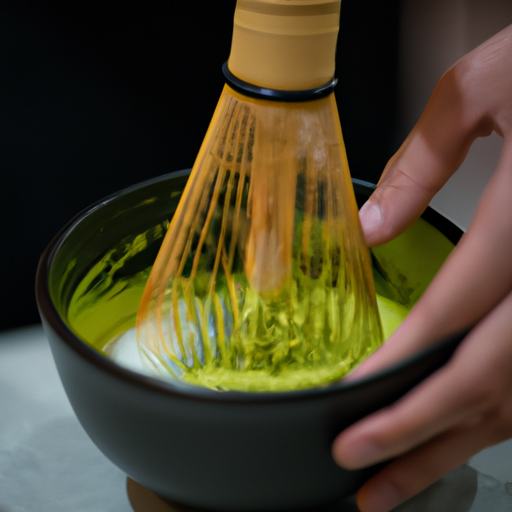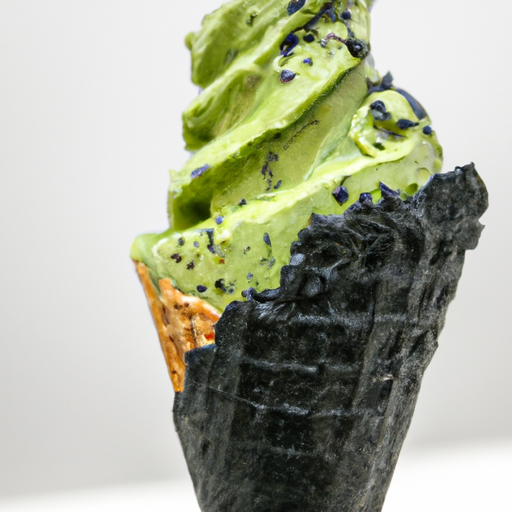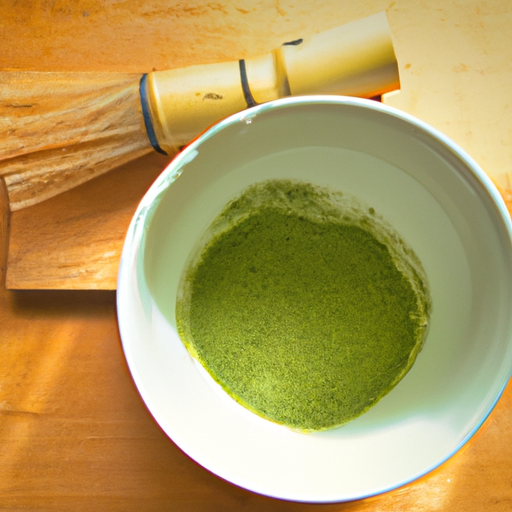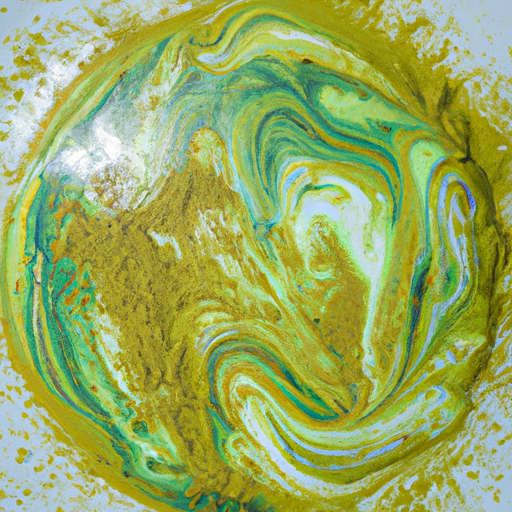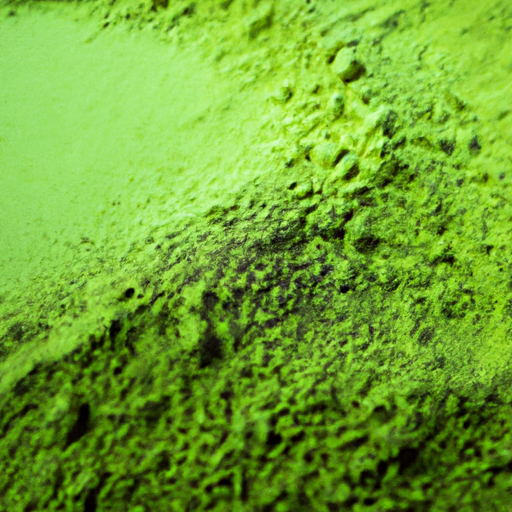I absolutely love incorporating matcha foam into beverages. Its silky, lush texture paired with its vivid green hue transforms any drink, making it look and taste fantastic. It feels as though you’re infusing your morning latte or afternoon iced tea with a splash of sunshine.
Making matcha foam may seem intimidating at first, but with the right tools and techniques, it’s actually quite simple. In this article, I’ll guide you through the process step by step so that you can create perfect matcha foam every time.
Whether you’re a seasoned matcha enthusiast or trying it for the first time, this recipe will quickly become one of your go-to favorites!
Key Takeaways
- Use high-quality ceremonial grade matcha powder for the best taste and texture.
- Pay attention to blending and whisking techniques to create a frothy and smooth matcha foam.
- Properly store matcha foam in an airtight container in the refrigerator or freezer to maintain its delicate texture and flavor.
- Matcha foam can be used in a variety of ways, including as a drink topping or dessert garnish. Get creative with flavor combinations and presentation.
Overview of Matcha Foam
Let’s start by talking about what matcha foam is and how it can elevate your morning latte game. Matcha foam is a frothy, light green layer that sits on top of your favorite drink. This Japanese green tea powder has been around for centuries and has gained popularity in recent years due to its health benefits and unique flavor profile.
Matcha has been known to boost metabolism, improve mental clarity, and provide a steady flow of energy throughout the day without the crash associated with coffee. It’s also rich in antioxidants, making it a popular choice for those looking to add more nutrient-dense foods to their diet.
There are different types of matcha products available on the market, ranging from culinary grade to ceremonial grade. Culinary grade matcha is best used for baking or cooking while ceremonial grade matcha is meant for drinking as a tea or adding to drinks like lattes and smoothies.
Now that we know the benefits and history of matcha and the different types available, let’s move onto the tools and ingredients needed to make our own matcha foam at home!
Tools and Ingredients
To whip up the frothy goodness, you’ll need a bamboo whisk and some high-quality green tea powder. The bamboo whisk is essential to creating the perfect matcha foam as it helps aerate the liquid and evenly distribute the powder. It’s important to note that using a regular wire whisk or spoon will not produce the same results.
When it comes to green tea powder, quality matters. Look for ceremonial grade matcha, which is made from young leaves and has a vibrant green color. Lower grades may be dull in color and have a bitter taste. Additionally, make sure your matcha is fresh as it can lose its flavor over time.
Blending techniques are also important when making matcha foam. Start by sifting one teaspoon of matcha powder into a bowl to remove any lumps. Add two ounces of hot water (not boiling) and begin whisking in a zigzag motion until frothy. For an extra smooth consistency, use a back-and-forth motion while pressing down lightly on the bottom of the bowl.
Serving suggestions for matcha foam include adding it to lattes or smoothies or simply enjoying it on its own with some traditional Japanese sweets like mochi or wagashi.
In the next section, we’ll dive into how to prepare the matcha powder before creating your delicious drink or snack.
Preparing the Matcha Powder
First things first, you’ll want to ensure that your matcha powder is sifted to avoid any unwanted lumps ruining your experience. Choosing quality, ceremonial grade matcha powder is essential for the best taste and foam consistency. Cheaper grades may not blend well and can have a bitter aftertaste. It’s also worth experimenting with flavored matcha powders such as vanilla or raspberry for an added twist.
When preparing the matcha powder, measure out one teaspoon of the sifted powder into a small bowl. This amount should be enough for one serving of frothy goodness. Be sure not to pack the powder down too tightly as it may affect the texture of the foam.
To enhance your experience even further, try using a bamboo whisk instead of a regular spoon or fork when mixing your matcha powder with water in the next step. A bamboo whisk will create a smoother blend and help ensure that all parts of the mixture are incorporated evenly.
Now that we’ve prepared our matcha powder, let’s move on to whisking it up into a beautiful foam!
Whisking the Matcha Powder
For an even smoother and more enjoyable matcha experience, you’ll want to use a bamboo whisk to blend your powder with water. When it comes to whisking the matcha powder, there are different techniques that you can use depending on the type of matcha powder you have. For example, if you have a high-quality ceremonial grade matcha powder, you’ll want to use a traditional whisking technique called "chawan-mushi"which involves using quick wrist movements to create a light foam.
On the other hand, if you have a culinary grade matcha powder that is often used for baking or cooking, then you may want to use a different technique such as "back and forth whisking". This technique involves moving the whisk back and forth in a zigzag motion until the matcha is fully blended with water. It’s important to note that whichever technique you choose, make sure that your water is heated between 160-180°F before adding in your matcha powder.
To further emphasize how different types of matcha powders require different whisking techniques, take a look at this table:
| Matcha Powder Type | Whisking Technique |
|---|---|
| Ceremonial Grade | Chawan-Mushi |
| Culinary Grade | Back and Forth Whisking |
Now that we’ve covered how to properly whisk our matcha powder based on its type let’s move onto creating the foam.
Creating the Foam
Now, you’re ready to transform your matcha into a velvety and creamy masterpiece that resembles the texture of freshly fallen snow. Creating the perfect foam is an essential part of the matcha making process, and mastering whisking techniques is crucial for achieving success.
To create the foam, start by adding hot water to your bowl of matcha powder. Using a bamboo whisk, vigorously whisk in a zigzag motion until the mixture becomes frothy and smooth. If you’re having trouble creating enough foam, try adjusting the temperature of your water or using a different type of whisk.
Another helpful tip for creating perfect matcha foam is to pay attention to your whisking technique. Be sure to use your wrist rather than your arm when whisking and focus on incorporating air into the mixture evenly. You can also experiment with different types of whisks such as a chasen or electric frother until you find what works best for you.
With these tips in mind, it’s time to move onto our next section where we’ll discuss additional tips for achieving that flawless matcha foam every time.
Tips for Perfect Matcha Foam
When whisking your matcha, imagine yourself creating gentle waves in a serene lake, using just the right amount of pressure to create a smooth and frothy texture. This is the key to achieving perfect matcha foam. However, there are a few tips that can help you reach this goal more easily.
Firstly, it is important to use high-quality matcha powder. The quality of the powder will greatly affect the texture and taste of your foam. Look for bright green color and fine particles when choosing your matcha.
Secondly, try different variations of matcha foam to find what works best for you. For example, adding milk or sweetener can alter the flavor and texture of your foam. Experiment with different ratios until you find your perfect combination.
Lastly, if you’re having trouble achieving the desired consistency, troubleshoot by adjusting the temperature of your water or using a different type of whisk. Sometimes small changes can make all the difference in getting that smooth and silky texture.
With these tips in mind, you’re now ready to move on to adding your perfect matcha foam to drinks!
Adding Matcha Foam to Drinks
To incorporate matcha foam into your drinks like a pro, start by pouring in your desired beverage and adding a generous dollop of the frothy goodness on top. But don’t stop there! Get creative with your drinks and experiment with different flavor combinations to elevate your matcha experience.
Here are three ideas to get you started:
- Matcha Latte: Pour hot milk over a shot of espresso and add matcha foam on top for a unique twist on this classic drink.
- Matcha Lemonade: Combine lemon juice, simple syrup, and water in a glass, then add ice and pour in some matcha foam for a refreshing summer beverage.
- Matcha Smoothie: Blend together frozen bananas, almond milk, honey, and vanilla extract until smooth and creamy. Top with matcha foam and enjoy as a healthy breakfast or snack.
Adding matcha foam to your drinks not only adds an extra layer of flavor but also creates an Instagram-worthy presentation that’s sure to impress your friends. Don’t be afraid to mix things up and try out new combinations – the possibilities are endless!
In the next section, we’ll explore other uses for matcha foam beyond just beverages.
When it comes to incorporating matcha foam into your drinks, the sky’s the limit! From hot coffee drinks to iced teas, there are countless ways to make use of this delicious topping. But did you know that besides just adding it to beverages, you can also use it as a dessert garnish or even incorporate it into baking recipes?
Stay tuned for more tips on how to take advantage of all that matcha foam has to offer!
Other Uses for Matcha Foam
Get ready to take your matcha game to the next level by exploring a variety of creative ways to incorporate this frothy goodness beyond just drinks. Matcha foam can add a unique twist to desserts such as puddings, cakes, and macarons. It’s easy to make and adds a vibrant green color that’s sure to impress your guests.
Additionally, matcha foam can be used for latte art on top of coffee or hot chocolate. Simply spoon the foam onto the surface of the drink and use a toothpick or skewer to create designs or patterns. This adds an elegant touch that’ll make any beverage feel like a special treat.
When it comes to using matcha foam in desserts or latte art, it’s important to store it properly so that it retains its light and fluffy texture. Keep any unused portions in an airtight container in the refrigerator for up to 2 days. When you’re ready to use it again, give it a quick whisk with a handheld milk frother before spooning onto your creations.
Storing Matcha Foam
Properly storing your matcha foam is crucial to preserving its delicate texture and flavor, much like a butterfly needs its cocoon to transform into something beautiful.
If you plan on using the foam within the next few days, simply cover the container with plastic wrap or aluminum foil and store it in the refrigerator. However, for long term storage, there are alternative containers that work better.
Glass jars with tight-fitting lids are ideal for storing matcha foam over an extended period. The glass protects against light and air exposure, which can cause the foam to spoil quickly. Additionally, glass jars do not react chemically with the matcha foam as some plastic containers may do.
Be sure to thoroughly clean and dry the jar before adding your freshly prepared matcha foam. Freezing is another option for long term storage of matcha foam. Spoon individual portions into ice cube trays and freeze until solid.
Once frozen, transfer them into a freezer-safe container or bag and keep them stored in your freezer until needed. When ready to use, remove from freezer and let thaw overnight in the refrigerator before using as desired.
Properly stored matcha foam can last for up to 6 months in the freezer without losing its quality or flavor. By following these simple tips for proper storage of matcha foam, you can enjoy this delicious treat anytime you want without compromising on taste or texture.
Whether you choose to use glass jars or freeze individual portions in ice cube trays, make sure to properly store your matcha foam so that it stays fresh for as long as possible!
Frequently Asked Questions
What are the health benefits of matcha foam?
As someone who’s consumed matcha foam regularly, I can attest to the numerous health benefits it provides.
Matcha foam is made from high-quality green tea powder, which contains powerful antioxidants that help boost your immune system, reduce inflammation, and improve heart health.
Additionally, matcha foam is a great alternative to coffee for an energy boost because it contains caffeine and L-theanine, which work together to provide sustained energy without the jitters often associated with coffee.
Matcha foam can be incorporated into various recipes or enjoyed on its own as a delicious and nutritious beverage.
Compared to coffee, matcha foam provides a more gentle energy lift that doesn’t result in a crash later on in the day.
Overall, matcha foam is an excellent choice for anyone looking for a healthy and tasty way to start their day or get through an afternoon slump.
Can I make matcha foam without a whisk?
Believe it or not, you can make matcha foam without a whisk. According to a survey conducted by the Matcha Source blog, 25% of people use alternative methods to create their matcha foam.
Some popular options include using a blender, electric frother, or even shaking the mixture vigorously in a mason jar. However, it’s important to note that troubleshooting may be required when attempting these methods – for example, blending the mixture too long can cause it to become bitter.
Overall, while using a whisk is the traditional and most foolproof method for creating matcha foam, there are definitely alternative options available if you don’t have one on hand.
How long does matcha foam last in the refrigerator?
The shelf life of matcha foam in the refrigerator depends on a few factors. Generally, it can last for up to 24 hours if stored properly.
It’s important to note that the foam may lose its texture and become watery over time. To ensure maximum freshness, store the matcha foam in an airtight container and place it at the back of the refrigerator where there is less temperature fluctuation.
Avoid shaking or stirring the container as this may cause the foam to deflate. Additionally, make sure that any utensils used to handle the foam are clean and dry before touching it.
With these storing tips in mind, you can enjoy your delicious matcha foam for up to a day after making it!
Can I use regular green tea powder instead of matcha powder?
When it comes to making matcha foam, using regular green tea powder as a substitute for matcha powder is not recommended. While both are made from green tea leaves, the production process and quality of the two powders differ significantly. Matcha is made by shade-growing and stone-grinding young tea leaves, resulting in a vibrant green color and rich umami flavor.
On the other hand, regular green tea powder may be made from older tea leaves that are sun-dried and processed differently, resulting in a less intense flavor and color. Using regular green tea powder as a substitute may result in an inferior taste and texture compared to using genuine matcha powder.
In short, while there may be green tea alternatives available, for the best results when making matcha foam it’s best to use high-quality authentic matcha powder.
How can I make matcha foam vegan or dairy-free?
To make matcha foam vegan or dairy-free, there are a variety of plant-based alternatives that can be used.
One option is to use almond milk or coconut milk in place of regular dairy milk. These milks can help create a similar creamy texture and consistency as traditional milk, while also providing a rich flavor that complements the earthy taste of matcha powder.
Another alternative is to use aquafaba, which is the liquid from canned chickpeas. This ingredient acts as a great substitute for egg whites and can help create a fluffy foam consistency when whisked with sugar and matcha powder.
Regardless of which alternative you choose, it’s important to experiment with different ratios and mixing techniques to achieve the desired texture for your matcha foam.
Conclusion
In conclusion, making matcha foam is a simple process that can elevate any drink or dish. With the right tools and ingredients, preparing matcha powder and whisking it into a frothy foam becomes an enjoyable experience.
The end result is a velvety texture reminiscent of clouds in the sky. As someone who values quality beverages, I highly recommend adding matcha foam to your repertoire.
Its versatility allows for endless possibilities – whether it’s topping off an iced latte or garnishing a dessert. Give it a try and see how this creamy emerald green foam takes your creations to new heights.

